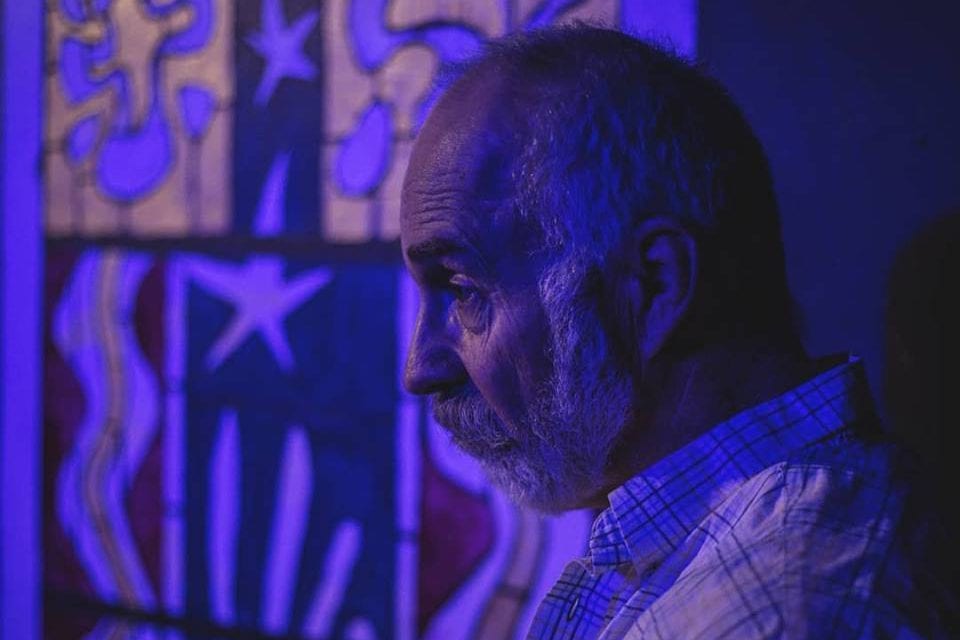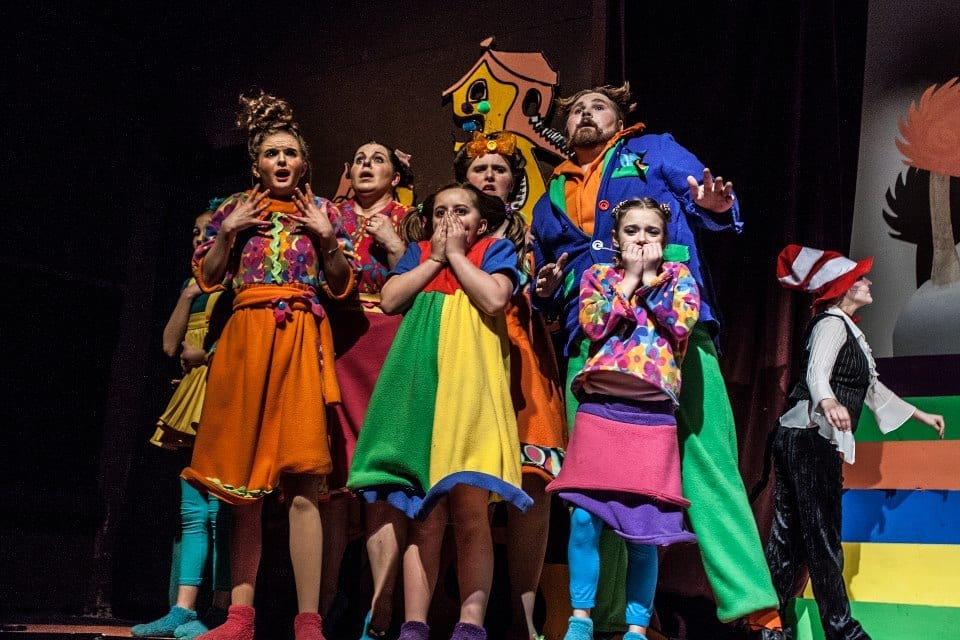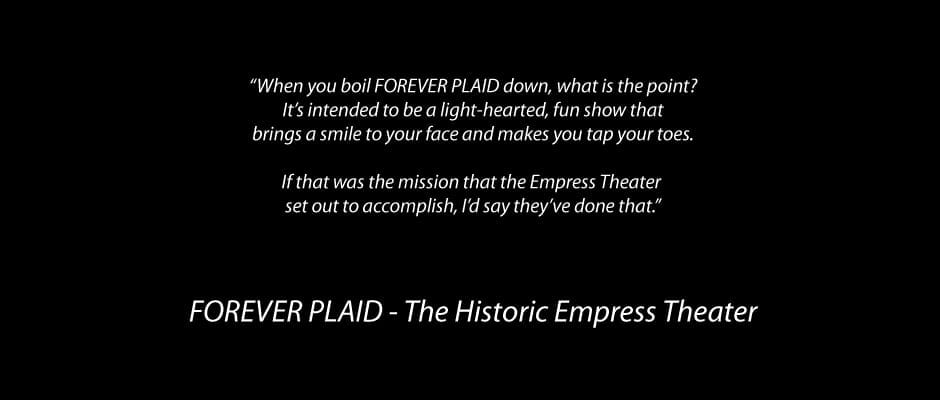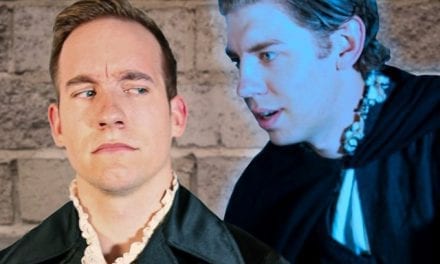PROVO — Michael, a frequent church-hopper, has received a dream from the Almighty above: he knows the day and time the rapture will happen. His prodigal daughter, ‘D’, has finally come home after years of separation. Unfortunately, her bed is taken by a random stranger, the mysterious and reserved Martin who has taken residence as Michael’s right hand man. Everyone will be together for the rapture, and there’s only a few more hours left. But ‘D’ has doubts that the family won’t hear. ‘D’ doesn’t understand why her father can be so certain about this. ‘D’ has a secret that can shake the whole family’s foundation. So does she tell them? The Rapture Happens at Midnight is a well-devised and well-created show. Playing at An Other Theater Company in Provo, the show brings together a talented cast and crew for the premiere. The show has a special feel to it, one of family, doubt, and faith.

Show closes May 4, 2019.
Designed by Camilla Martinez, the set was the first hint at what the night had in store, tying in the deeper messages that were slowly revealed through the play. Spread throughout the walls were four giant window panes, all different designs of stained glass. Between the panes of glass hung a collage of pictures of a smiling, happy family. The biggest picture in the room included members of the whole family, all except the prodigal Deborah, ‘D’ for short. The most important piece in the collage was a wooden clock, hanging in the center, a metaphorical picture of the way these lives on the wall would revolve around the ticking and twisting timepiece.
Director and creator Liz Golden guided this story into a full-fledged performance over the course of eight weeks, with a style called Devised Theatre. Through the devising process, the actors must work together to build their relationships and create potential moments that could eventually become part of the play as a whole. According to the playbill, these scenes were finally refined into a script that was rehearsed to give the final product.
Although this style meant that the actors didn’t have much time to memorize a written script, this bold choice played in Golden’s favor. Golden was able to help create realistic moments with these characters, providing a recognizable family for the audience to hopefully fall in love with. The characters were given the freedom to speak over each other in fights, a luxury not often given to established scripts. The characters had motives and backgrounds, all from the help of Golden, to help drive the story. Golden did a remarkable job with her directorial choices throughout the play by staging physical moments in each side of the room to portray the struggling relationships between specific characters.
It is important to note costume designer, Ash Knowles, for the realistic and comfortable choice of clothing. Each article of clothing accurately represented the characters’ personalities, including sweater vests for the inspired father, dresses for the “holier” sisters and spunky black tights for the “cool” sibling. Knowles’s costume designs were so natural that I didn’t notice them until one of the actors pointed them out.

Two cast members of An Other Theater Company’s The Rapture Happens at Midnight.
My favorite character of the night was Hannah (played by Martinez), the youngest sister and coolest aunt to Paislee. Martinez had this special comfort on the stage that made her presence undeniable. The guitar-playing actress didn’t outshine the other characters, though; Martinez as Hannah was simply spunky and outgoing. One of Hannah’s goals during the show was to fulfill the bucket-list of her pre-teen niece by giving Paislee her first drink of Coca Cola and showing her what it’s like to toilet paper a house. It was through these shenanigans that Martinez kept me laughing through the night.
Joel Applegate, who played the father, Michael, excelled in his role of ordinary-gone-zealous Christian podcast leader. Applegate stood, arms clasped down low, with the demeanor of a leader and words of a religious fanatic for his podcast, words like, “All those who hear me are chosen. Do not go into doubt.” Applegate made it easy to see how Michael could have religious followers. Applegate’s portrayal of Michael was realistic and natural, even stuttering in his excuses to his confronting children.
Deborah is a very complicated character, but somehow threaded seamlessly with every character. Played by Jessamyn Svensson, ‘D’ was a leader, a doubter, a fighter, a coward, a sister, and a daughter throughout this play. Her comedic timing was well-placed in the family’s structure, usually in the form of teasing her sisters. Overall, Svensson’s portrayal was natural and emotional, and her honest performance had me questioning what is important in my life.
Although the play is about the Rapture happening in the next 17 hours after the first introduction, the show was surprisingly lighthearted and hilarious. The story line had many layers and a surprisingly pleasant amount of depth to it, especially because it is only eight weeks old. The show includes adult language that may be offensive to children, but the language was used sporadically and wasn’t distracting. The show is not a hyper-aggressive conversion piece, but one of love, sacrifice, and how to deal with the obstacles, even when they come from trusted sources. I highly recommend opening up to The Rapture Happens at Midnight.





